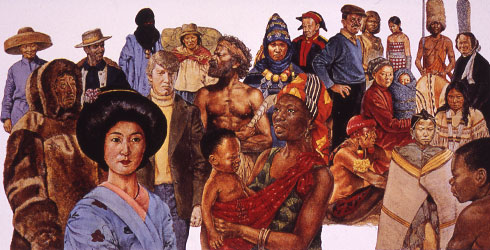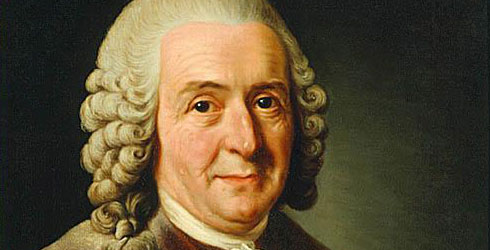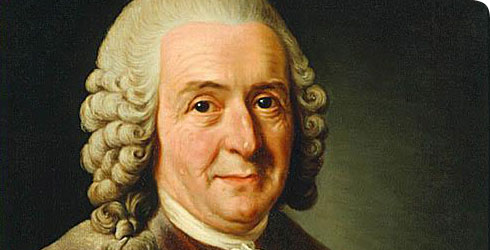Homo sapiens
Homo sapiens is the most widely dispersed and numerous medium-large size mammal, and the only extant member of the genus Homo.
The type specimen of Homo sapiens is Carl Linnaeus (1707–1778), based on the descriptions in the 10th edition of his Systema Naturae (Linnaeus, 1758).
No single person was recognised as the type specimen until 1959, when William Stearn wrote that "Linnaeus himself, must stand as the type of his Homo sapiens". This was enough to designate Linnaeus as a lectotype - the single name-bearing type specimen for the species Homo sapiens.
Genus characteristics include a high degree of encephalisation and a skeleton adapted to habitual bipedalism. Species traits include:
- a globular cranial vault
- supraorbital ridges small or absent
- a chin on the lower jaw
Species detail
-

Evolution
Humans probably originated in Africa, but genetic studies recently showed the story is more complex than we thought. Find out more.
-

Distribution
Homo sapiens is the most abundant medium-sized mammal on earth. Find out how it has spread across the globe.
-

Biology
Humans are social animals and vary in size and appearance. Find out more about their habits and breeding patterns.
-

Behaviour
This species has an ancestral hunter-gatherer lifestyle, which has now developed to include agriculture and industrialisation. Find out more about the unusual behaviour of this species.
-

Conservation
Human beings have demonstrated a remarkable capacity to alter and shape their environment in pursuit of food, shelter and livelihoods. Find out what impact this is having.
Images

The beginnings of modern human cultural complexity can be traced back at least 100,000 years in Africa and the Middle East. African sites have extensive evidence of the use of red iron oxide pigments, for colouring shell beads and (probably also) the human body, while in the Middle East there are cave sites in Israel with shell beads (one is pictured from the site of Skhul), pigments, and human burials with associated grave goods such as deer antlers.

Human diversity

An arial view of London showing a range of human activities.

Carolus Linnaeus
© Wikimedia
Vitruvian man by Leonardo da Vinci

Hominid reconstructions in chronological order
About the authors
Prof Chris Stringer and Dr Louise Humphrey
Human Origins Research Group, Department of Palaeontology.
